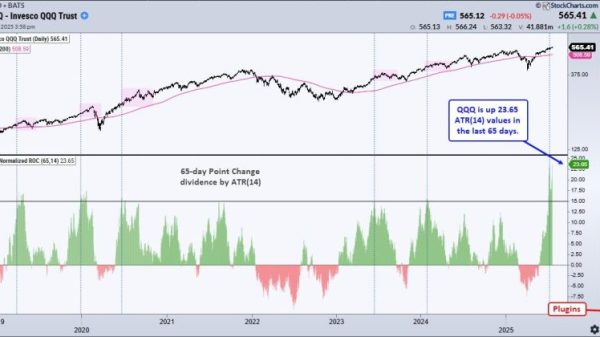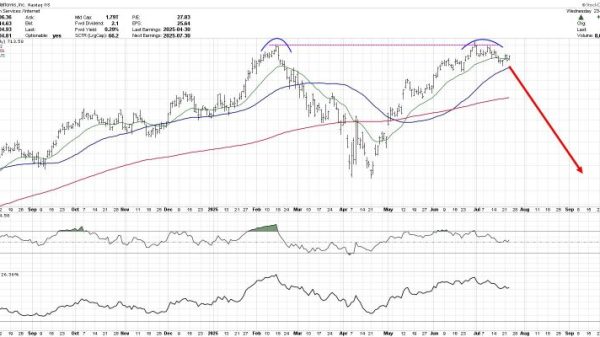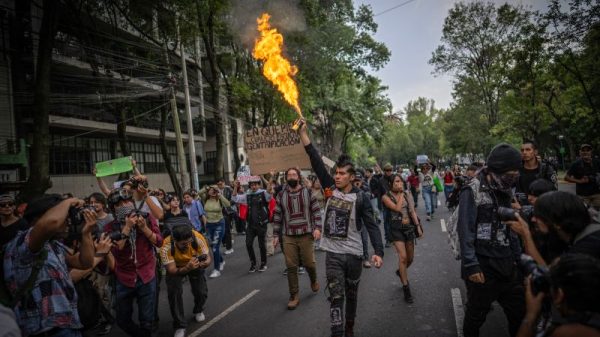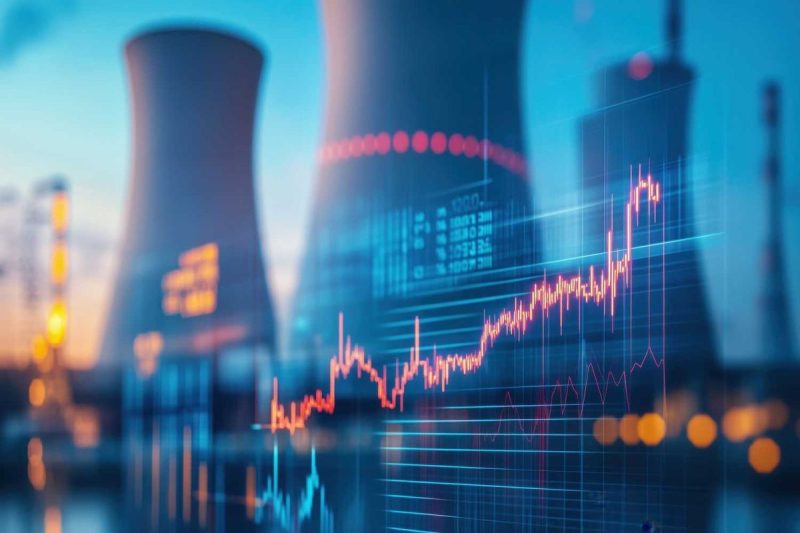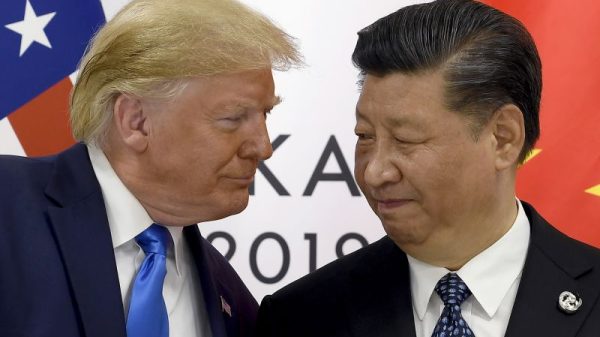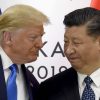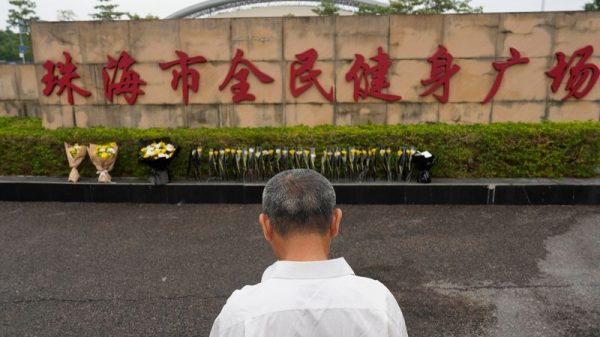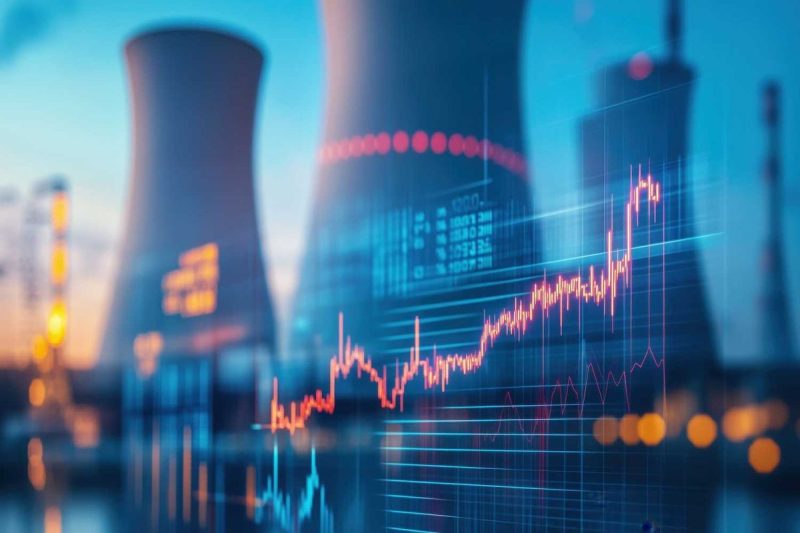
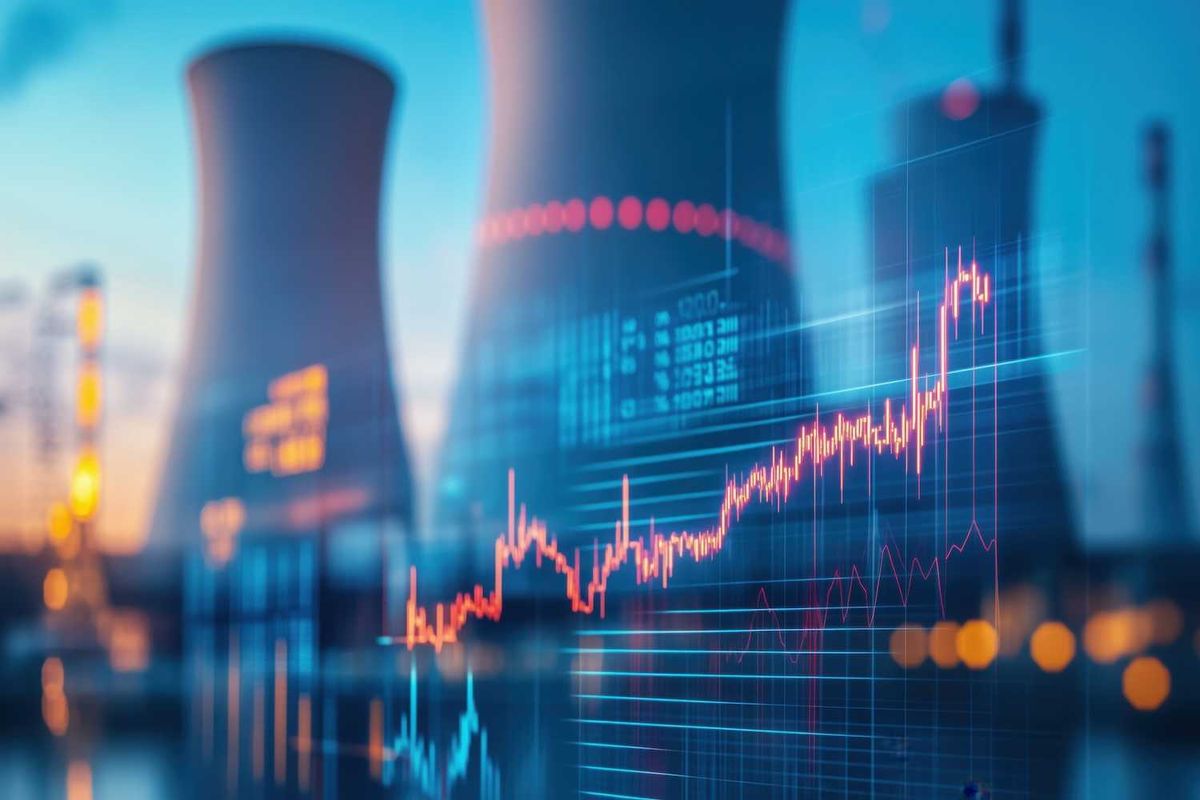
The uranium space is currently navigating a complex mix of optimism and structural pressures as investors increasingly look to the sector and major miners reduce their guidance.
After sinking to a US$63.25 per pound on March 7 — the lowest point since September 2023 — the U3O8 spot price rebounded through the third quarter, aided by declining secondary supply and renewed investor activity, though limited contracting by many utilities has kept term market activity relatively low year-to-date.
These tailwinds propelled the spot price to a year-to-date high of US$83.18 at the end of September, and are expected to continue adding support heading into the final quarter of the year.
“September saw uranium markets ignite as fresh capital flowed in, sentiment turned sharply positive and supply tightened, fueling the next leg of the uranium bull market,” wrote Jacob White, exchange-traded fund (ETF) product manager at Sprott Asset Management, in an October report on uranium.
Supply fundamentals remain strained: the US Energy Information Administration warns of a widening uranium shortfall over the next decade, estimating a cumulative gap of 184 million pounds without new mine development.
As the need for fresh supply mounts, the World Nuclear Association (WNA) sees longer timelines for new builds.
‘Despite the urgent need for new capacity to be brought online, what we’re experiencing is that the time to develop new mines is actually getting longer, not shorter. So in this report, we’ve changed the expected development timeline from 8 to 15 years to between 10 to 20 years,’ said Malcolm Critchley, CEO of the WNA, at the World Nuclear Symposium.
He warned that new supply is needed just to meet current needs, let alone forecast growth in demand.
According to the WNA, total nuclear capacity is expected to rise to 449 gigawatts electrical (GWe) by 2030 and 746 GWe by 2040, including 49 GWe of capacity from small modular reactors.
The issue was further compounded in late August, when uranium sector major Cameco (TSX:CCO,NYSE:CCJ) cut its 2025 guidance, citing expansion delays at the McArthur River mine in Saskatchewan.
Annual production is now expected at 14 million to 15 million pounds of U3O8, down from the previous target of 18 million pounds. The company’s reduction, marking roughly 5 percent of global supply, follows a similar output cut from Kazakhstan’s Kazatomprom, and highlights ongoing production constraints in the uranium sector.
The supply crunch comes as demand is projected to more than double over the next decade. As noted in the report, global reactor requirements will rise from 68,920 metric tons in 2025 to 150,000 metric tons in 2040, up 117 percent.
Rising investor appetite for uranium
“It’s the re-engagement of the investor,” he said during an interview.
“A lot of the demand in the spot market in Q3 has been driven by the purchasing of Sprott Physical Uranium Trust (TSX:U.U,OTCQX:SRUUF) and Yellow Cake (LSE:YCA,OTCQB:YLLXF). They have investor interest buying their shares to the point where they’re valued equal to more than the price of physical uranium.”
Compared to other commodities, physical uranium is undervalued, and that has led to heightened investor participation, according to Kelly. He noted that uranium-themed ETFs were the target for many investors looking to get into the space during Q3 — the VanEck Uranium and Nuclear Technologies UCITS ETF (LSE:NUCL) also increased allocations as its assets under management grew from US$500 million at the end of Q2 to over US$1 billion as Q3 concluded.
Alessandro Valentino, product manager at VanEck, attributes the growth to investor appetite and news out of the US. Among other factors, he pointed to the US Department of Energy’s US$1.52 billion federal loan guarantee to Holtec International to support the restart of the Palisades nuclear plant in Michigan.
The funding is earmarked for bringing the 800 megawatt facility back online. It will be the first commercial US nuclear reactor to restart after being permanently shut down, pending Nuclear Regulatory Commission approval.
Valentino also underscored supply deals from the artificial intelligence (AI) sector, as well as a late September initial public offering (IPO) from Fermi America (NASDAQ:FRMI), as growth catalysts.
On September 30, Fermi, a Texas-based firm developing a next-generation AI-powered energy and data campus, priced its IPO at US$21 per share, selling 32.5 million shares and raising about US$682.5 million.
The IPO proceeds will fund the company’s ambitious Project Matador, which aims to deploy 11 gigawatts of power via nuclear, solar, natural gas and battery systems at a 5,200 acre campus near Amarillo, Texas.
These news items are a “strong signal that money is now entering the space,” said Valentino. “We would say that the big push has come from the US side.”
AI and energy stoke uranium demand
A key recent change in the uranium market is support from AI data centers.
As AI continues to reshape industries, the energy demands of data centers are escalating rapidly. A recent report by the International Energy Agency projects that electricity consumption from data centers worldwide will more than double by 2030, reaching approximately 945 terawatt hours, surpassing the current electricity consumption of Japan.
AI-optimized data centers are anticipated to be the primary drivers of this surge, with their electricity demand expected to quadruple during the same period. To satiate these energy requirements, the tech sector is increasingly looking to nuclear power to meet its demands in an environmentally conscious way.
This was further evidenced when Microsoft (NASDAQ:MSFT) announced it was joining the WNA. This collaboration has only increased the correlation between uranium stocks and AI stocks.
Kelly explained that during a presentation he watched, “they showed an overlapping chart of AI stocks and uranium stocks, and they were behaving hand-in-hand over the last couple of years.”
While uranium is the fuel for the AI revolution, AI is also aiding the uranium exploration side.
The company recently digitized tens of thousands of pages of 1970s-era reports, maps and drill logs, feeding them into an AI-assisted system capable of analyzing, layering and interpreting the data with unprecedented speed and precision.
“AI helps us prioritize which information matters most and what it tells us about the geology,” Lamb explained. “It’s like opening a treasure chest — we’re uncovering insights that show our project is much larger than anyone realized.”
Additionally, AI is helping reveal what decades of analog exploration once missed — so-called “invisible uranium.”
Historically, geologists relied on gamma probes to estimate uranium content, but these tools often produced incomplete readings due to “disequilibrium,” where uranium or its decay products had shifted underground.
That meant much of the resource went undetected. Now, however, AI tools can process tens of thousands of geochemical data points, comparing ratios and patterns far beyond human capability.
According to Lamb, the technology can identify zones likely to contain hidden uranium and even cross reference results with regional geological data or similar deposits worldwide. In recent drilling, this approach helped the company uncover up to 60 percent more uranium than older probes indicated — that’s evidence, Lamb said, that machine learning could redefine the accuracy and efficiency of uranium exploration.
By combining historical expertise with modern machine learning, Myriad is turning archival data into a dynamic exploration tool — one that could redefine the scale and potential of its uranium projects in the US and beyond.
US moves to secure uranium supply
On the policy front, governments are stepping in to support domestic fuel cycles. In Canada, federal incentives and extended exploration tax credits aim to stimulate uranium mining and nuclear infrastructure.
In the US, moves such as the ban on Russian enriched-uranium imports are reshaping procurement requirements and amplifying urgency around domestic fuel security. To achieve its ambitions the Trump admin has been fast tracking select projects. In August, Uranium Energy (NYSEAMERICAN:UEC) secured expedited permitting for its Sweetwater uranium complex in Wyoming under the Trump administration’s FAST-41 initiative.
Subsequently, the US announced plans to expand its strategic uranium stockpile as part of a broader push to secure nuclear power supply and reduce reliance on Russia. Secretary of Energy Chris Wright said the aim is to eliminate Russia-enriched uranium from US reactors, which still power about 20 percent of the nation’s electricity.
Building on earlier federal initiatives, Washington’s continued investment in domestic uranium production and enrichment aims to strengthen long-term energy security, and serves as an opportunity catalyst.
“We believe the sector will keep on attracting investors,” said Van Eck’s Valentino, adding “the nuclear sector will eventually be normalized as being as green as all the other green energy sources.”
Uranium market forecast for Q4 and beyond
With uranium market showing momentum as well as deep gaps in primary supply, the coming months will test whether policy support, investment flows and project execution can keep pace with rising demand.
Sprott’s White believes that while the market has momentum, its continued success will hinge on factors like disciplined producer behavior and the timely delivery of new mines.
For his part, Lamb agrees with forecasts that the spot price could reach US$135 in Q1 2026.
“I just see (the spot price) kind of ticking up over the next while,” he said. “AI and data, those key sectors now that have exploded, they’re going to be huge consumers of uranium, however you slice it.”
Lamb went on to note that a spot price of US$200 in 2026 “wouldn’t surprise me at all.”
Securities Disclosure: I, Georgia Williams, hold no direct investment interest in any company mentioned in this article.






